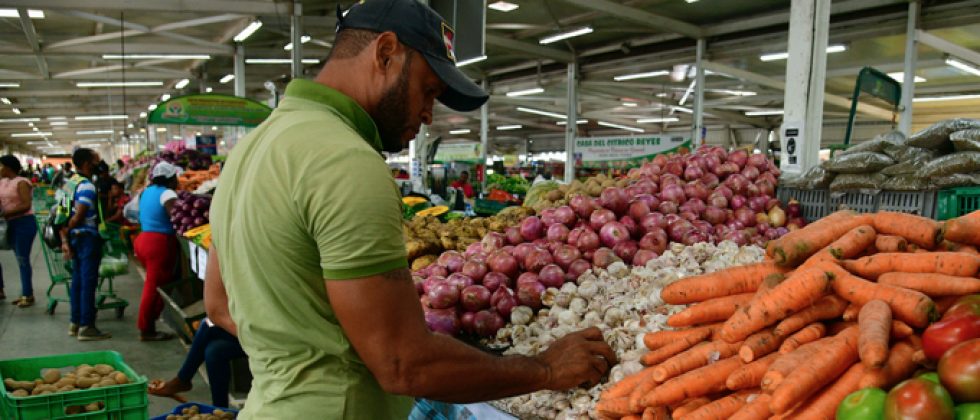news
“Zero Interest Rate: An Ill-Advised Project”, an article by Dr. Leonel Fernández
April 11, 2022
After reading the bill sent by the Executive Office to the Chamber of Deputies, which would temporarily eliminate the payment of customs fees for 67 products that are considered basic in a family’s food budget, I thought for a moment that the proposal was a mistake or confused reading.
The confusion stemmed from the fact that in the framework of the Dominican Republic’s trade policies, there were already several free-trade agreements signed with the United States and the Central American nations; the EPA, with Europe; CARICOM, with the Caribbean nations, and a bilateral agreement with Panama.
Therefore, what the zero interest rate bill was encouraging, perhaps without meaning to, was to reduce the inflation rate through the creation of a new free-trade system between the Dominican Republic with the ret of the world. A unilateral system, if you will.
This way, our country would allow, for a period of six months, the tax-free import of 67 products while Dominicans would have no reciprocity rights. That is, to export to those countries based on the same conditions that they would import to us.
After the announcement, more than 200 organizations from various production sectors, immediately reacted to the proposal.
They stated that the approval of the bill would impact approximately 25 percent of the national economy, hundreds of thousands of individuals from the agricultural sectors, more than half a million direct and indirect jobs, as well as thousands of micro, small and medium-sized companies that participate in the commercialization chain of said products.
They also expressed that the abovementioned bill would allow the import of products that originated in countries with sanitary problems, issues that could put at risk our poultry, livestock, and cattle industries.
The overall sentiment expressed was that the temporary elimination of these custom tariffs do not necessarily solve inflation rates or encourage a drop in the price of food.
A Second Version
For such a complex phenomenon, the original bill was truly very simplistic. It consisted only of three recitals, three hearings, two articles, a paragraph, and nothing more.
As a result of the conversations held between the Government and the private sector, the project was modified. A second version was presented.
The latest version considered, on the one hand, establishing a guarantee that the import products would comply with the necessary sanitary and agricultural protection requirements demanded by the Dominican State. On the other hand, a ceiling needed to be established, through the designation of quotas, for the import of these products.
The pact was drawn to avoid a confrontation with the Government, establish sanitary and agricultural sanitary guidelines, and try to control or mitigate the harmful impact this measure would have on the national productive system.
In any case, what did come through is that elimination of the customs payments does not lead to a drop in the prices of the basic food staples and that it would not benefit, as some may believe, the more vulnerable sectors of Dominican society.
As a matter of fact, more than 70 percent of the products that are to be important at zero rate tariffs, are already being imported to the country through the DR-CARTA. And, an additional 20 percent, is coming through the United States, Costa Rica and Nicaragua.
By signing the free-trade agreement known as the DR-CAFTA, the Dominican Republic agreed, in 2005, to liberalize all tariffs for industrial products in a period that would not exceed 10 years. The deadline was 2015.
For the agricultural and agri-business products, the deadline was 15 years, reaching full liberalization by the year 2020. For some products, such as rice, milk, and poultry, the deadline for the total elimination of tariffs was extended to 2025.
As one can see, within the country’s trade policies, the Dominican Republic has entered into free-trade agreements, with reciprocity clauses, and with a calendar that would include a gradual aperture of tariffs over a period of time.
Now, with this zero tariff project – even though it is temporary – it would be a new free-trade agreement model, fast-tracked, with immediate aperture, and with a unilateral nature.
The Products
According to the zero rate project, some of the imported products would include beef, pork, and poultry products. In this last category, breasts, thighs, and wings will be included.
Also included: powdered milk, butter, margarine, garlic, beans, and flour, such as wheat and corn. Also, grains, lard, and oils, both animal and vegetable-based.
The list also includes pasta, cooked and uncooked, peas and lentils. But what really attracted my attention was the idea of importing break, in its various forms: soft bread, water-based bread, wholewheat bread, baguettes and sandwich-style bread, including frozen bread.
The List Also Includes Other Bread
The contrast between the Dominican Republic project that liberalizes the import of finished products, and the recent decision taken by the government of Colombia – to eliminate tariffs for a period of 12 months for the import of more than 30 products for the production of that country’s industry – is notable.
Some of the products that will benefit from this zero rate policy are medication used in the veterinary sector, phosphatic fertilizers, insecticides, herbicides, magnesium nitrate, and citric acid.
Also, nuts and palm oil kernels for production, seeds for fruit and forest trees, bulbs, roots, and milk substitutes to feed calves.
What a Difference!
While Colombia introduces policies that will open their markets to support the growth of the agricultural sector, by increasing production and thus reducing inflation, in our country we eliminate the tariff payments of 67 imported products. The end result will be competition among these products, in unequal conditions, with our national productive sector.
Even though the bill will soon become a national law, the idea of zero rates for finished products is a total mistake.





